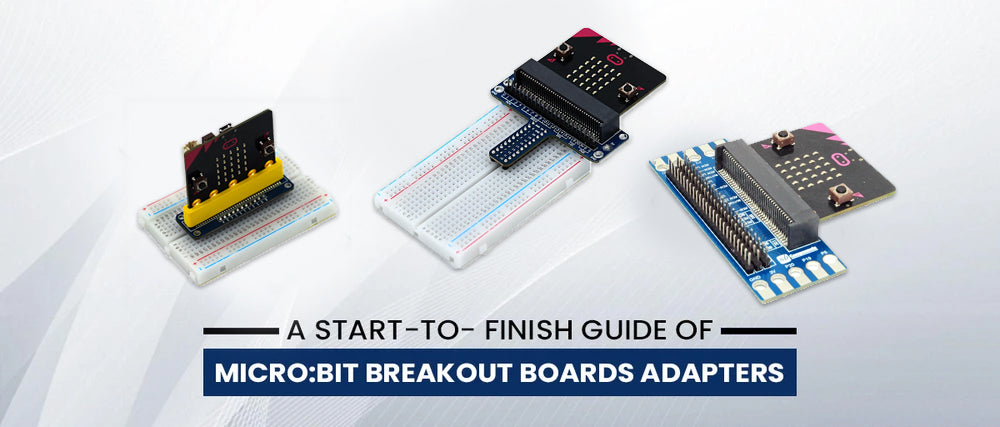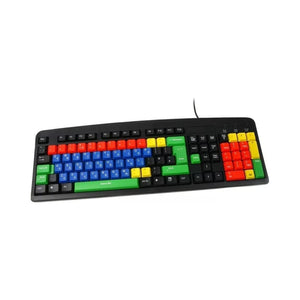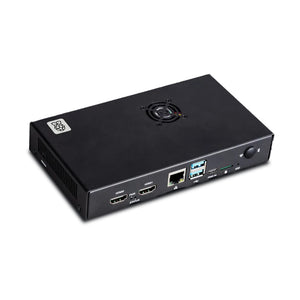BBC designed micro:bit to develop the curiosity about the programming among the kids all around the world. micro:bit has the size of a credit card with powerful components that scales up its range of applications. SB Components come as a solution by developing breakout boards for the additional circuit and hardware to the user. Numerous gadgets can be made by the combination of the micro:bit and breakout boards that increase the interest of a user.
What is the need for Breakout boards?
Some users want to expand the potential of the micro:bit by making more connections which they cannot achieve just from the micro:bit only. The detailed specifications of the breakout board that SB Components develop will be mentioned below for a better understanding of the product. A lot of people use single-board computers like, Raspberry Pi or Arduino, which want to increase their horizon of creativity for designing better devices with the micro:bit. It created a need for the breakout that made SB Components to develop breakout boards for their users.
What did SB Components design for their users?
micro:bit consists of an ARM Cortex-M0 processor, magnetometer sensors, accelerometer sensors, connectivity via Bluetooth and USB, 25 LEDs in the display, programable buttons(two). It can be powered either by battery or USB connection. SB Components did their research to make a device, that can make the users connect more devices with the micro:bit or any single-board computer, from which they developed breakout for them. If we look at the design of the micro:bit then it has the pins for the connections to other devices. Over time the desire for enhancement of the user makes them utilize more pins of the micro:bit which becomes impossible after all the pins get connected to the devices. The breakout provides an extension of the pins to the micro:bit so that a user can connect it with more components like LED, motor, etc.
What types of Breakout SB Components developed?
SB Components came up with the solution for the users in the form of a breakout. There are mainly three types of breakouts that SB Components provides in the market
1. BBC micro:bit Breadboard Adapter - SB Components designed BBC micro: bit Breakout Adapter to make the user plug a micro:bit that allows the user to utilize the system in numerous ways. Micro: bit is developed to plug into a standard 2.54mm pitch breadboard. It can directly connect to the breadboard and give the way to the pin of the micro:bit for further connections. There are two 11 pin headers in this breakout adapter to form connections with the breadboard. The connection methods of the micro:bit breakout adapter is easy to use that gained momentum in the market. It is designed by SB Components in the shape of a “T” to allow the user to facilitate their process of the connections. A user just needs to plug the micro: bit in the breakout adapter then plug it in the breadboard. There are no extra tools that are required for the installation. It would make a user feel comfortable in assembling the components. A user can utilize the features of the micro: bit Breakout Adapter to perform experiments and make better devices.

Features
- Compatible with both Micro: bit and Micro: bit V2
- Can be directly plugged-in with the breadboard
- 2x11 header pins
- Multiple modules can be connected
- Easy installation
Specification
- 2 x micro:bit pins set
- 1 x micro:bit edge connector.
- Dimensions: 7 x 5 x 2 cm (Approx.)
2. BBC Micro:bit Breakout - A lot of people want to expand the landscape of their usage of the micro:bit. SB Components came up with the idea of Micro: bit Breakout so that the user can connect additional hardware with the micro:bit that will increase the efficiency of the assembly. It allows the user to take the advantage of the feature of the Micro:bit Breakout that adds the functionality of the connection with other hardware components. This micro:bit Breakout has a design in which 21 pins are broken out in the total from which a user can connect the modules. It provides an additional input-output line that would make the user connect the modules or hardware components with it. A jumper wire can be used for the connections that would make the work easier for the user.

Specification
- Dimension: 88.78 x 33.40 mm(Approx.)
- 2.54mm pitch pin headers
- Three line GPIO header
Features
- Quick and easy installation
- 21 break out pins
- 2.54mm Pitch header
- Compatible with both Micro: bit and Micro: bit V2
3. Breadboard Breakout for BBC micro:bit - Breakout Boards can save the space of the users that would make a user perform in a better way. SB Components made this breadboard breakout to make the BBC micro:bit perform more tasks than usual. It allows the user to facilitate the actions that would make them more efficient in their work. It enables the user to connect the micro:bit with the breakout boards into a standard 2.54mm breadboard. SB Components designed it to perform the task by plugging in across the middle slot of a breadboard.

Features
- 2 X 11-way header pins
- Jumper wire for connections
- Easy installation
- Nicely labelled
- No tools for soldering is required
Specification
- Length: 58.4mm.
- Width: 12.8mm.
- Height: 20.76.
- Pin Pitch: 2.54mm
Related Articles:
- TOP 4 Expansions for BBC micro:bit
- Introduction to BBC micro:bit
- micro:bit programming with blocks
- Introduction of Relay bit for micro:bit
- Create Your Robot With The micro:bit
- Introduction of Motor Driver for micro:bit
- Introduction to Stem:Bit - The micro:bit learning kit
- micro:bit Programming via Raspberry Pi 4 using Raspbian Buster








